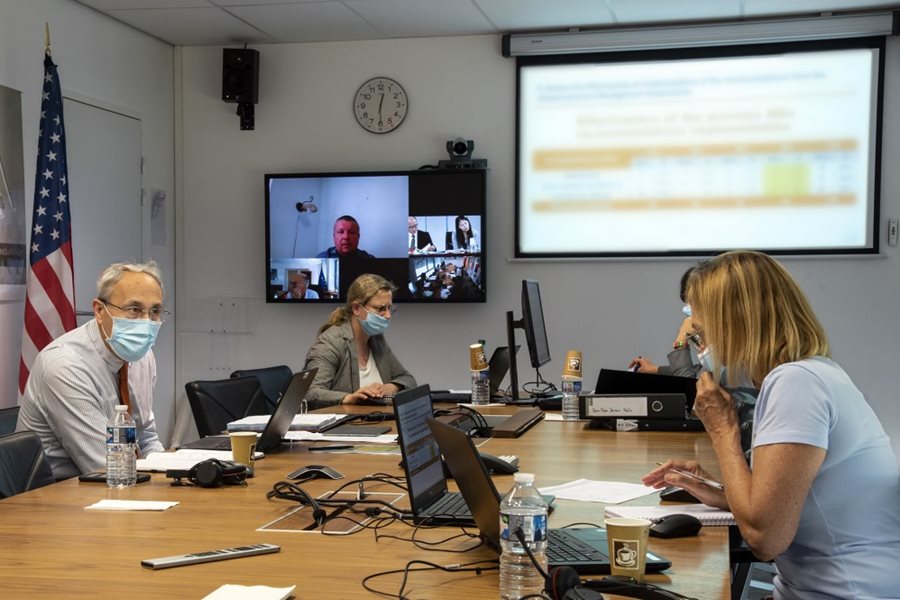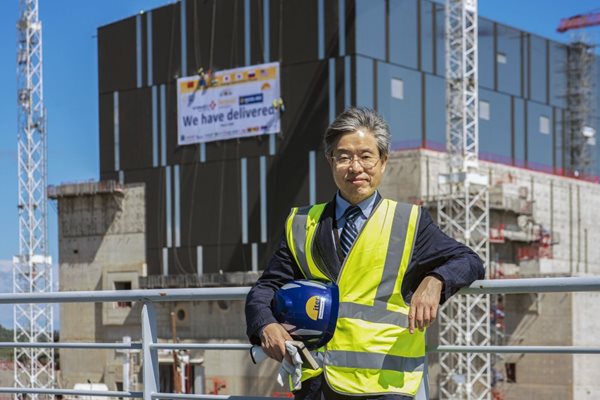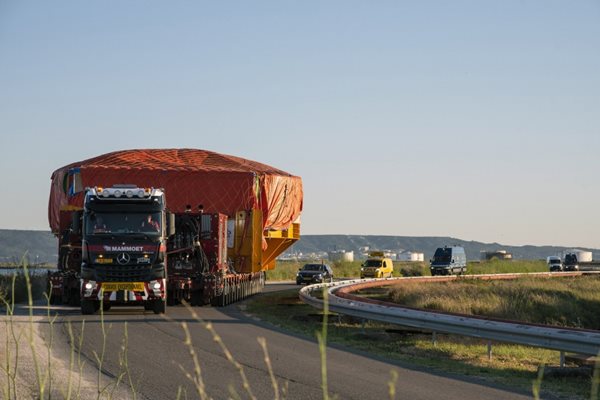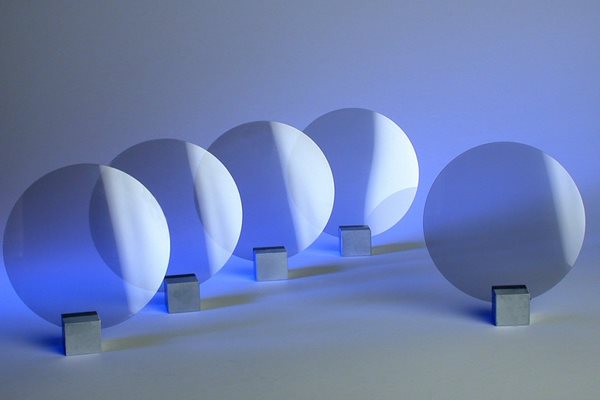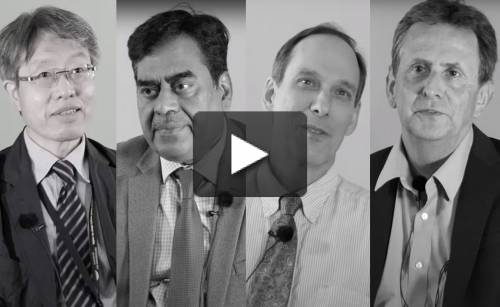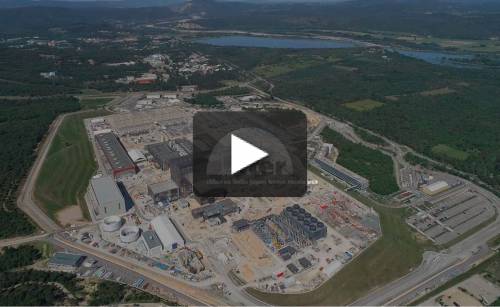
you're currently reading the news digest published from 15 Jun 2020 to 23 Jun 2020
featured3
of-interest2
video2
press15
featured
26th ITER Council | ITER Council meets virtually
The Twenty-Sixth Meeting of the ITER Council convened on 17-18 June to assess the latest progress reports and performance metrics of the ITER Project, including preliminary assessments of the impacts of the COVID-19 pandemic. For the first time in Council history, the meeting took place by videoconference. International travel restrictions could not keep the 26th Meeting of the ITER Council from taking place, but they did contribute to modifying the format and the organization of the two-day meeting, which traditionally convenes at ITER Headquarters. On the east coast of the United States, participants logged in by videoconference at 6:00 a.m., while in Beijing, Seoul and Tokyo it was the end of the workday. In India, the start of the meeting fell late afternoon; in the European capitals and Moscow the discussions began closer to lunch. For the first time in ITER Council history, Council members—high-level government representatives and experts from each of the ITER Members—carried out their review of ITER Project progress in two three-hour remote sessions, one on each day. "Thank you very much for this opportunity to meet in these exceptional circumstances ... and for accepting to hold this ITER Council meeting remotely in order to allow the ITER Project to progress steadily in these unexpected and challenging circumstances," said Director-General Bernard Bigot during his opening remarks. It was the first ITER Council chaired by LUO Delong, from China. The group commended the ITER Organization and the Domestic Agencies for the development and rapid deployment of a continuity plan during the global pandemic COVID-19. The plan permitted critical activities related to ITER's closely integrated project schedule to move forward, while ensuring the health and safety of staff and collaborators through rigorous adherence to hygienic measures. To date, there have been no instances of COVID-19 infection on the ITER worksite. Globally, the ITER Organization and the Domestic Agencies have been able to maintain productivity in oversight, in design activities, and in progress on many schedule-critical activities. However the extended shutdowns in the manufacturing of some key components in affected countries and the slowdown in some assembly activities might have potential consequences for the project schedule. The Council will review a follow-up report at its next meeting in November. The Council also noted, with appreciation, the number of project achievements since its last meeting, including the completion and delivery of multiple first-of-a-kind components that have been five or more years in fabrication. Project execution towards First Plasma is nearly 70 percent complete. Read the IC-26 press release in English and in French.
Top management | Keun-Kyeong Kim, Head of Construction
In the small Korean village (25 houses!) where Keun-Kyeong Kim spent the first eight years of his life, there was no electricity— just batteries to power transistor radios. Maybe this is one of the reasons why 'Ken,' the name he adopted later in life, devoted his whole professional life to building plants that would power his fast-developing but resource-starved country. All in all, in different capacities from field engineer to top management in Korea's nuclear industry, the recently appointed Head of the ITER Construction Domain contributed to or managed the development and construction of 25 out of the 30 'nuclear units' in the peninsula—plus a couple in China. In the 1970s, when Ken came of age and began thinking about his professional future, Korea was still recovering from the devastation of the war. 'The country had no industrial infrastructure, nothing. We needed to develop an industry, to manufacture cars, ships, consumer electronics ... and for this, what we needed above all was electricity.' What Korea had in abundance however was human resources and ingenuity—young men and women like Ken who 'wanted to implement things,' to build, to create a future for their country. Ken was attracted by architecture and 'mega structures involving a lot of people.' In 1981, he graduated in structural engineering and that same year got his first job as construction supervisor at the Hanbit nuclear power plant project—indeed a 'mega structure involving a lot of people.' From then on, Ken's life and Korea's nuclear industry became intimately entwined. 'The challenge was, and still is, to build fast and safe.' Learning from other countries was central to Korea's approach. In 1983-1984, Ken spent a year at EDF, the French utility, training in seismic design, project scheduling, and radiation protection. Along with acquiring a quite decent command of French, he completed the skills that would eventually led him to key management positions in Korea's fast developing nuclear industry. At age 60, he brings broad and many-facetted competence to ITER. As Head of the newly created Construction Domain, Ken will oversee a crucial phase of the project. 'Civil works at ITER are approximately 75 percent complete,' he explains, 'but civil works are only part of what we call 'construction.' Component and system installation and 'bringing all things together' will be the great challenge of the coming months and years. Our busiest days are still ahead.' Ken comes from a world where power plants are built in five years, with 'work actually concentrated in three.' Although he is well aware of the unique nature of ITER and knows that 'solutions that are effective in a specific environment might not work in a different one,' he will implement here one of his core competencies—the minimizing of duration and cost in large-scale projects while enhancing safety.
Image of the week | The heaviest load on the longest day
The sun is setting over the unique landscape of the inland sea Étang-de-Berre—a mix of industrial installations, barren cliffs and reed-covered marshes. From nearby Marseille airport, planes are taking off amidst the shrieks of seagulls and the silent parades of pink flamingos. It is Monday 22 June, one of the longest days of the year. On the Piste des Salins, a stretch of road that connects the salt marshes and oil refineries to the village of Berre, a long convoy of vehicles slowly progresses. Dwarfing them all is a 342-wheel, self-propelled transport platform loaded with a bulky shape wrapped in orange tarpaulin—one of the heaviest ITER components and the widest to be transported along the ITER Itinerary. Procured by Europe and manufactured in China, poloidal field coil #6 (PF6) is starting its four-night land journey to the ITER site. Over the past five years, more than 40 convoys transporting 'highly exceptional loads' have travelled the ITER Itinerary. This one, however, is special: not only is it exceptionally heavy (800 tonnes, with frame and transport vehicle included), it is especially wide. With a width of 11.5 metres, the transport frame protruding from either side of the trailer will brush by tree-lined alleys, lampposts and rock cliffs along the Itinerary's narrowest passages. But it has all been rehearsed and modelled, with 3D laser mapping contributing to plotting the trailer's optimal trajectory.
of-interest
How can fusion change our future?
Looking for a new way to explain fusion in your classrooms and boardrooms? Interested in a two-minute summary of what fusion is and how it can change our future? A new animation from Fusion for Energy, the European Domestic Agency for ITER, uses a fresh visual approach to make fusion accessible to all. Subtitles are available in English, French, German, Italian, and Spanish. See the video here.
ITER needs 60 small diamond windows
Synthetic diamond windows will play a double function in the ITER machine—allowing the microwaves of the electron cyclotron heating system to pass through to reach the plasma while providing an effective leak-proof vacuum barrier. High-purity CVD (chemical vapour deposition) diamond windows offer unsurpassed hardness, broad band optical transparency, and extremely high thermal conductivity. The European Domestic Agency, Fusion for Energy, is working with the German firm Diamond Materials for the production of 60 diamond disks (Ø 7 cm) for the electron cyclotron heating system. See the full story here.
